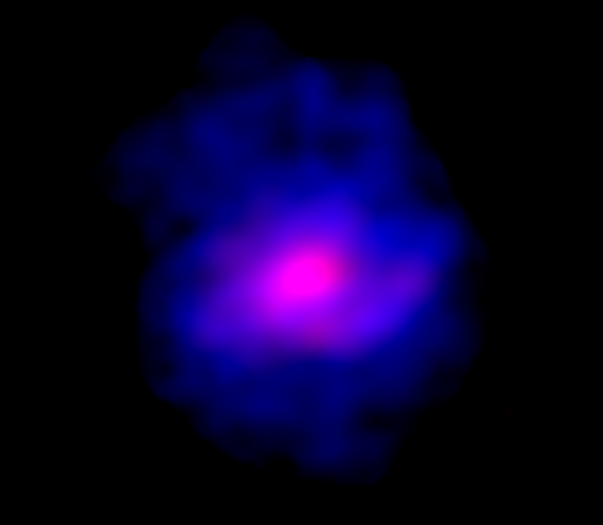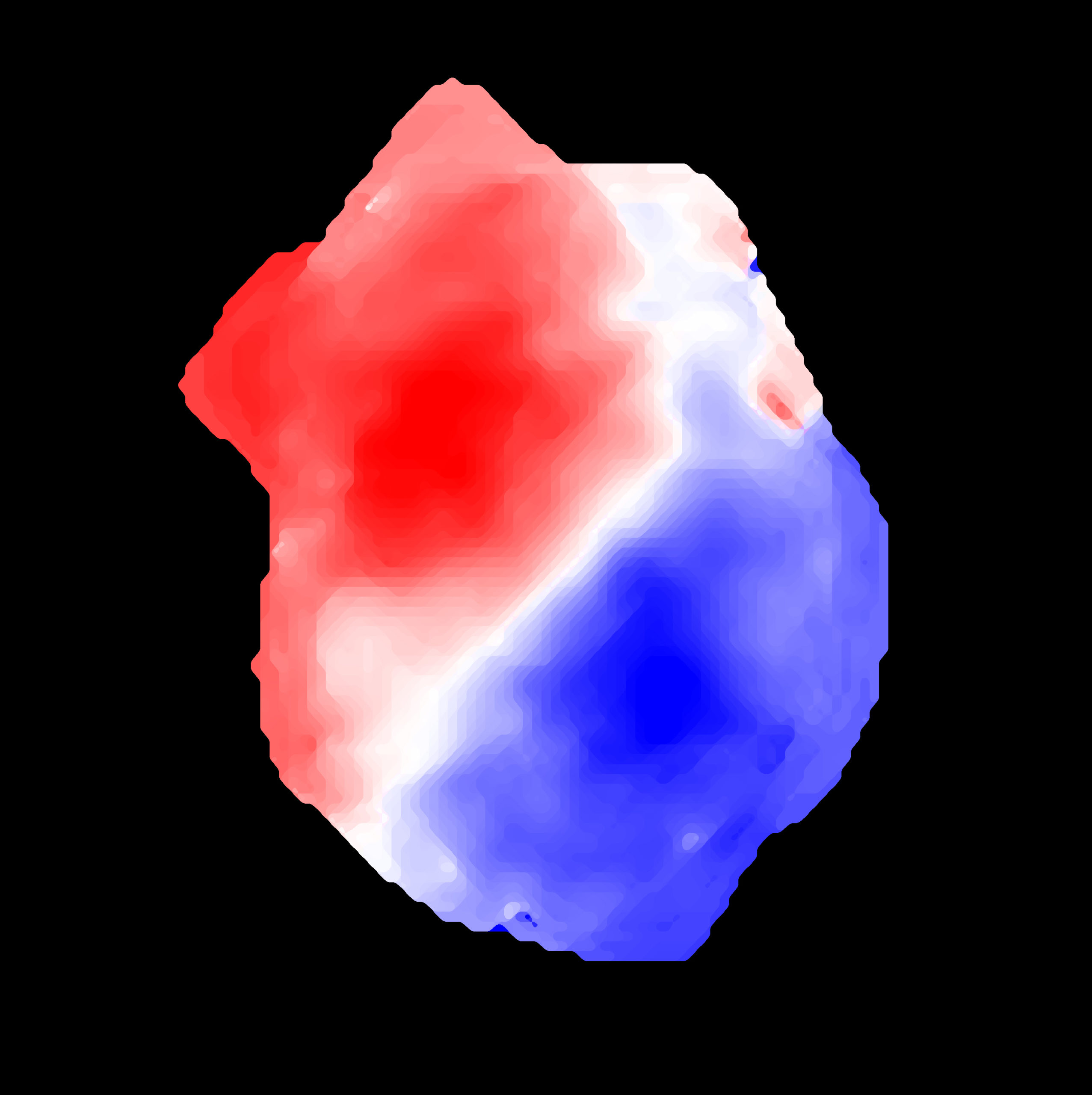At 1.2 billion years young, the galaxy ALESS 073.1 should have the chaotic look of a youthful galaxy — a fledging, diffuse group of stars and gas suspended in the early universe. Instead, this primordial starburst galaxy has a central bulge and rotating belt that makes it look billions of years older. This odd corner of the universe was recently imaged by the Atacama Large Millimetre Array in Chile.
An international team of astronomers dug into the nascent galaxy’s rapid development in a recent analysis published in the journal Scientific Reports. They found ALESS’s age to be less than 10% the current age of the universe, but parts of its structure indicate a much older entity. Specifically, the presence of a bulge in the galaxy’s centre and a rotating disc surrounding that centre, feature that astronomers have historically only seen in galaxies that have had more time to form, on the scale of billions of years.

“The general expectation until a few years ago was that galaxies in the primordial universe should be very chaotic and turbulent,” said Federico Lelli, an astronomer at the Arcetri Astrophysical Observatory in Italy, in a video call. Lelli, lead author of the new paper, started the work at the European Southern Observatory in Munich and continued it at Cardiff University. “One would expect to see gas motions that are chaotic. But this is at odds with what we see in this galaxy.”
In the tumult of the early universe, the idea was that new stars, and later on, galaxies, would form from the accretion of gas and material from the interstellar ether. The galaxy Lelli’s team observed suggests the timeline of galactic formation needs to be revisited.
“To put it in human terms, this galaxy is like 8 years old, but it looks like a teenager or a full-grown person,” Lelli said.
The research team didn’t directly see the bulge, which indicates a density of stars that typically surround a supermassive black hole at a galaxy’s centre. Rather, they deduced the bulge’s presence by measuring the movement of gas and dust in the galaxy. The same goes for the galaxy’s rotation — which the team was able to figure from measurements of gas on either side of the galaxy, indicating that some gas was moving toward the viewer while gas on the other side was moving away.

The bulge could have occurred through a merger with another galaxy or through an inherently unstable galactic structure, though Lelli said the latter is less likely.
“This spectacular discovery challenges our current understanding of how galaxies form because we believed these features only arose in ‘mature’ galaxies, not in young ones,” said co-author Timothy Davis, an astronomer at Cardiff University, in a university press release.
Though the age of ALESS’s rotating disc isn’t known, its existence at the 1.2-billion-year mark still precedes any other known galactic disc.
“Ten years ago, we thought that discs formed maybe halfway through the age of the universe,” Lelli said. Since the universe is about 13.8 billion years old, that would be around 6.9 billion years ago. “And now we’re at 10%. The goalpost is moving back and back in time.”
The observations of ALESS suggest that there may be more to the formation of other early galaxies than previously thought.
“The question, of course, is how common is an object like this one, and whether this is the rule or the exception,” Lelli said. “To address this, we’re planning to observe more galaxies with similar resolution.”
Those observations of other galaxies were supposed to occur last year, but the covid-19 pandemic got in the way. For an observatory like ALMA, which hosts hundreds of people in the middle of a desert, research had to be put on hold. Lelli hopes that looking at other galaxies will help contextualize the mature countenance of ALESS 073.1. With the upcoming launch of the James Webb Space Telescope and the construction of the European Southern Observatory’s Extremely Large Telescope, it’s fair to say the future of space observation is bright, so long as we take the time to look.
